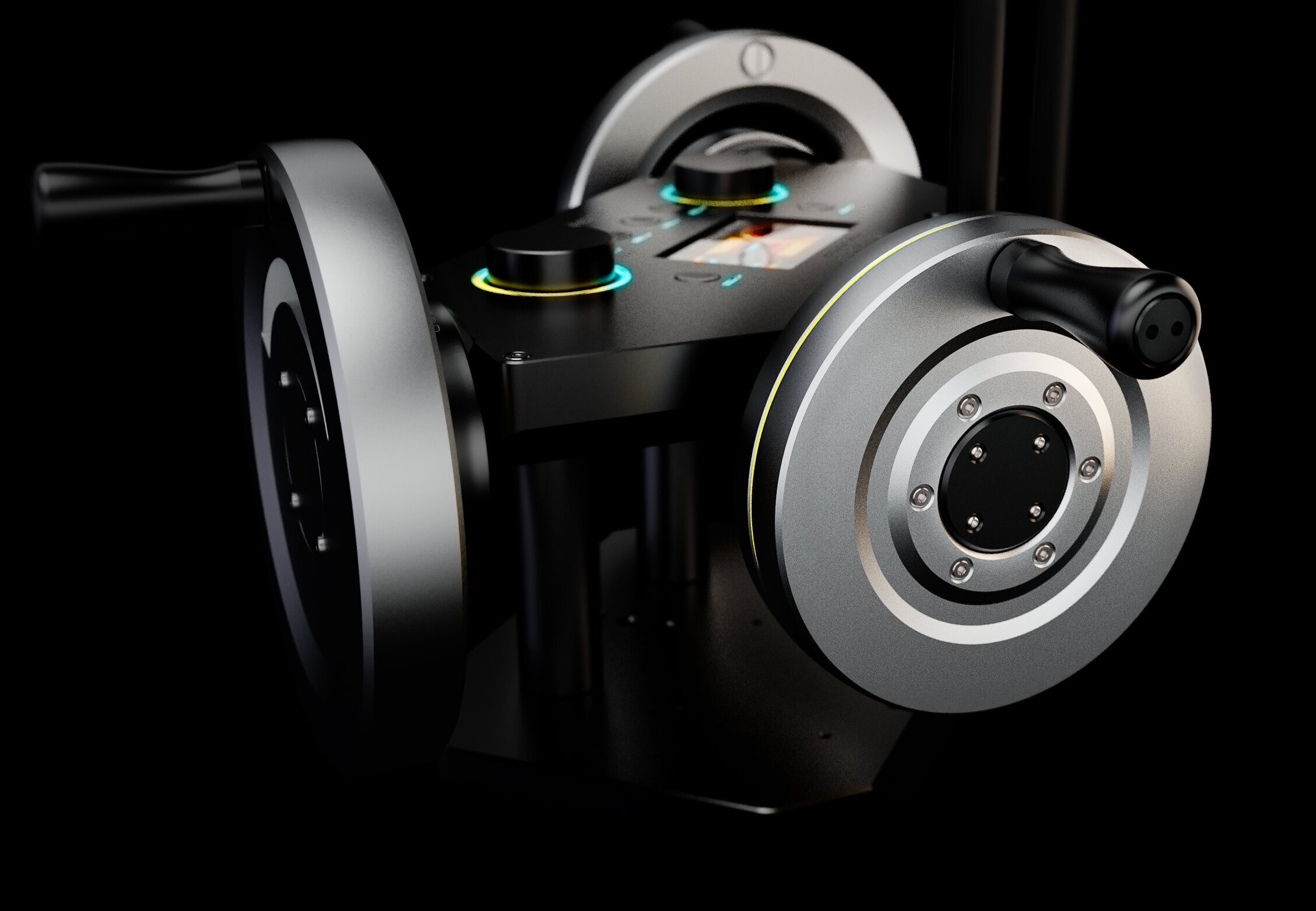Training Your Physics Engine: How to Avoid Motor Slips
Training Your Physics Engine: How to Avoid Motor Slips
The physics in the Inertia Wheels is fake (gasp!). It's no secret that we use motors to push and pull the wheels to recreate the physics of a heavier wheel. Now that you've wrapped your mind around the physics of it and the creative advantages of it, I want to talk a bit about our dark secret, motor slips, and how you can turn them into a benefit.
Today I want to share the collective wisdom from several hundred customers that now use the Inertia Wheels on set.
Part 3 of a series on physics from our founder, Boyd Hobbs. Read Part 1. Part 2. ❯
Now and then, particularly right after unboxing, customers will set up their brand new Inertia Wheels, power them on, and do what everyone wants to do: play with the motors. Everything is going well until... they feel the motor let go. All that mass suddenly and seemingly scarily disappears. The illusion vanishes. Next, they send us an email: "What is this? Is there something wrong with my unit?"
There's nothing wrong with your unit. That's what we call a motor slip. They are uncommon when actually operating a shot but can occur more easily on the bench. I want to focus on these for a moment because while they could be seen as an imperfection, once understood, they highlight one of the most remarkable—and counterintuitive—aspects of the Inertia Wheels: your brain.
At the end, I'll provide some quick tips for how to avoid motor slips while you're operating. But one of the best ways to prevent them is to understand them—and not just cognitively.
What are motor slips?
Motor slips are the result of applying too much acceleration to the motors at high mass settings. The forces necessary to match your hand's physical force and weight exceed what the motors—and their supporting circuitry—are capable of.
Emphasis added on "match" because of Newton's Third Law:
For every action, there is an equal and opposite reaction.
–Newton’s Third Law of Thermodynamics
Every time you push on something, if it doesn't move, that's because it is pushing back equally. If it starts to move slowly, that means you're pushing with a little more force than it is pushing back with, but it's still pushing back. Same with the Inertia Wheels, albeit created by motors. Every time you move the wheels, the motors use their available might to apply a synthetic and proportional opposite force.
Here's where things get tricky. Newton's Laws are infinity scalable across the universe—our motors are finite. The Inertia Motors must attempt to counteract every force you apply as quickly as you apply the force. The higher the Mass settings you apply to the wheels, the less available overhead the motors have to apply more counterforce for changes. Combine that with how much leverage you as an adult human can create, and if it's a show of force, the Inertia Wheels motors will lose every time.
Thankfully, camera operating is not arm wrestling. Finesse is an aspiration and necessity.
Train Your Physics Engine
I've talked a lot about the Inertia Wheel's "physics engine," the software that defines how the motors should behave according to Newton's Laws. Similarly, your brain has its own physics engine. This is your intuitive understanding of the Laws of Physics. We don't have these as wobbly babies. We learn them. Some people, like athletes (and dolly grips), can even continue to train this part of the brain well beyond walking and talking.
You don't need a Ph.D. in Physics to understand operating the Inertia Wheels. Your brain buys the illusion the Inertia Wheels are selling: that the wheels are genuinely heavier because the motors abide by the natural laws of physics to a T. That's your intuition at work. And your intuition is all you need—just with some practice.
Herein lies the incredibly straightforward solution to motor slips. Learn how to cause them! If your intuition knows how to cause them, it will also intuitively know how to avoid them. Yes, it's that simple.
Practice your Motor Slips
They say practice makes perfect. This is no different.
If you have a set of Inertia Wheels, power them up, turn the mass up to 8 or 9, grab the wheel directly (not the handle), and rapidly rotate your wrist just a few degrees. You should feel the motor slip as the motor pops free. If it doesn't, hold it more rigidly and use incrementally more force.
Play around with how rigid you hold the wheel and how quickly you rotate your wrist.
You will notice if you hold it with a lighter grip, motor slips happen less frequently.
If you rotate your wrist with less immediate acceleration, they happen less frequently.
Reduce the mass. Try again.
Grab the handle now. Try again.
The goal is for your brain to be able to accurately predict when a motor slip will occur and when it won't. Your intuition will then relate the various feelings, and you will start to anticipate when a motor slip might happen before it does.
Ultimately, the more finesse you use, the fewer motor slips will occur. Operating and finesse go together well!
Quick Tips
In general, the simple advice is to reduce your mass settings. Motor slips at a 3-4 on Mass, under actual operating conditions, are incredibly rare.
The second layer of advice is to work with the mass settings. If you want a slow, smooth move, use a high Mass setting. If you want to do whip pans, use a lighter Mass setting.
The third layer in preventing slips is to use the 30v AC power supply or a block battery. Higher voltage gives the motors more headroom (do not exceed 35 volts).



